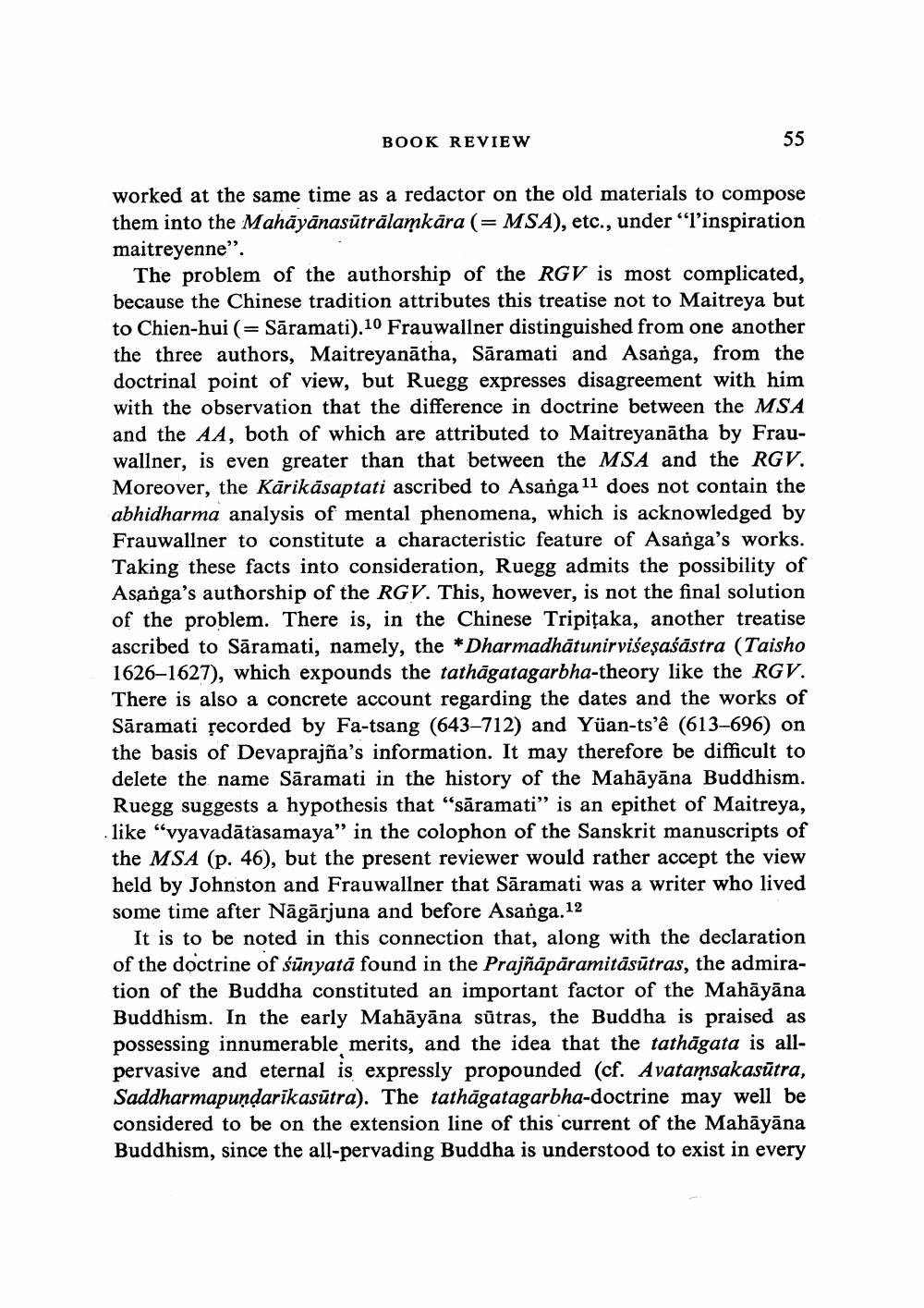________________ BOOK REVIEW 55 worked at the same time as a redactor on the old materials to compose them into the Mahayanasutralamkara (= MSA), etc., under "l'inspiration maitreyenne". The problem of the authorship of the RGV is most complicated, because the Chinese tradition attributes this treatise not to Maitreya but to Chien-hui (= Saramati).10 Frauwallner distinguished from one another the three authors, Maitreyanatha, Saramati and Asanga, from the doctrinal point of view, but Ruegg expresses disagreement with him with the observation that the difference in doctrine between the MSA and the AA, both of which are attributed to Maitreyanatha by Frauwallner, is even greater than that between the MSA and the RGV. Moreover, the Karikasaptati ascribed to Asanga 11 does not contain the abhidharma analysis of mental phenomena, which is acknowledged by Frauwallner to constitute a characteristic feature of Asanga's works. Taking these facts into consideration, Ruegg admits the possibility of Asanga's authorship of the RGV. This, however, is not the final solution of the problem. There is, in the Chinese Tripitaka, another treatise ascribed to Saramati, namely, the * Dharmadhatunirvisesasastra (Taisho 1626-1627), which expounds the tathagatagarbha-theory like the RGV. There is also a concrete account regarding the dates and the works of Saramati recorded by Fa-tsang (643-712) and Yuan-ts'e (613-696) on the basis of Devaprajna's information. It may therefore be difficult to delete the name Saramati in the history of the Mahayana Buddhism. Ruegg suggests a hypothesis that "saramati" is an epithet of Maitreya, like "vyavadatasamaya" in the colophon of the Sanskrit manuscripts of the MSA (p. 46), but the present reviewer would rather accept the view held by Johnston and Frauwallner that Saramati was a writer who lived some time after Nagarjuna and before Asanga. 12 It is to be noted in this connection that, along with the declaration of the doctrine of sunyata found in the Prajnaparamitasutras, the admiration of the Buddha constituted an important factor of the Mahayana Buddhism. In the early Mahayana sutras, the Buddha is praised as possessing innumerable merits, and the idea that the tathagata is allpervasive and eternal is expressly propounded (cf. Avatamsakasutra, Saddharmapundarikasutra). The tathagatagarbha-doctrine may well be considered to be on the extension line of this current of the Mahayana Buddhism, since the all-pervading Buddha is understood to exist in every




